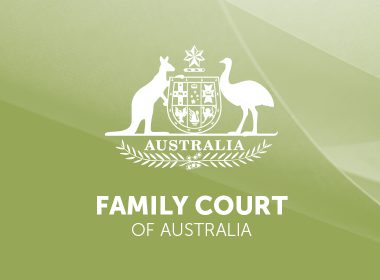Key decisions
- Sahrawi & Hadrami [2018] FamCAFC 170
- Squibb & Graham [2018] FCCA 1906
- Trevi [2018] FamCAFC 173
- Sagilde & Magee [2018] FamCAFC 143
CHILDREN
Trial judge misapplied High Court’s test of ‘unacceptable risk’ in M v M [1988] HCA 68
In Sahrawi & Hadrami [2018] FamCAFC 170 (4 September 2018) the Full Court (Ryan, Aldridge & Watts JJ) allowed the father’s appeal of Gill J’s parenting order. The parties married and lived in ‘Country E’ before coming to Australia via the mother’s student visa in 2015. Upon separation the mother sought a protection visa, alleging assault and sexual harassment by a neighbour in Country E. She also alleged family violence by the father (allegations he said were fabricated by the mother).
Gill J was not satisfied that such an assault had occurred (at [48]) but held (at [49]) that the Court could ‘assign it significance as an uncertain fact’ as was ‘recognised in the seminal High Court case of M v M [[1988] HCA 68]’, Gill J saying (at [146]) that M v M (where the High Court held that ‘the resolution of an allegation of sexual abuse against a parent is subservient … to the court’s determination of what is in the best interests of the child’, informed by whether an unacceptable risk of such abuse is found to exist) had a ‘more general application to the facts and considerations underlying a conclusion of what is in the best interests of a child’.
Ryan & Aldridge JJ said (at [39]-[40]):
‘It is a fundamental principle that a party who asserts facts bears the evidentiary onus or burden of proving them to the requisite standard. It is apparent that the mother failed to do so to the satisfaction of the primary judge. As the evidence adduced in support of the allegations was not accepted, it could not therefore continue to have a role to play in the fact-finding process … [T]he question of whether there is an unacceptable risk to a child still requires that there be actual evidence which at least gives rise to the conclusion that behaviour may have occurred or may occur.’


